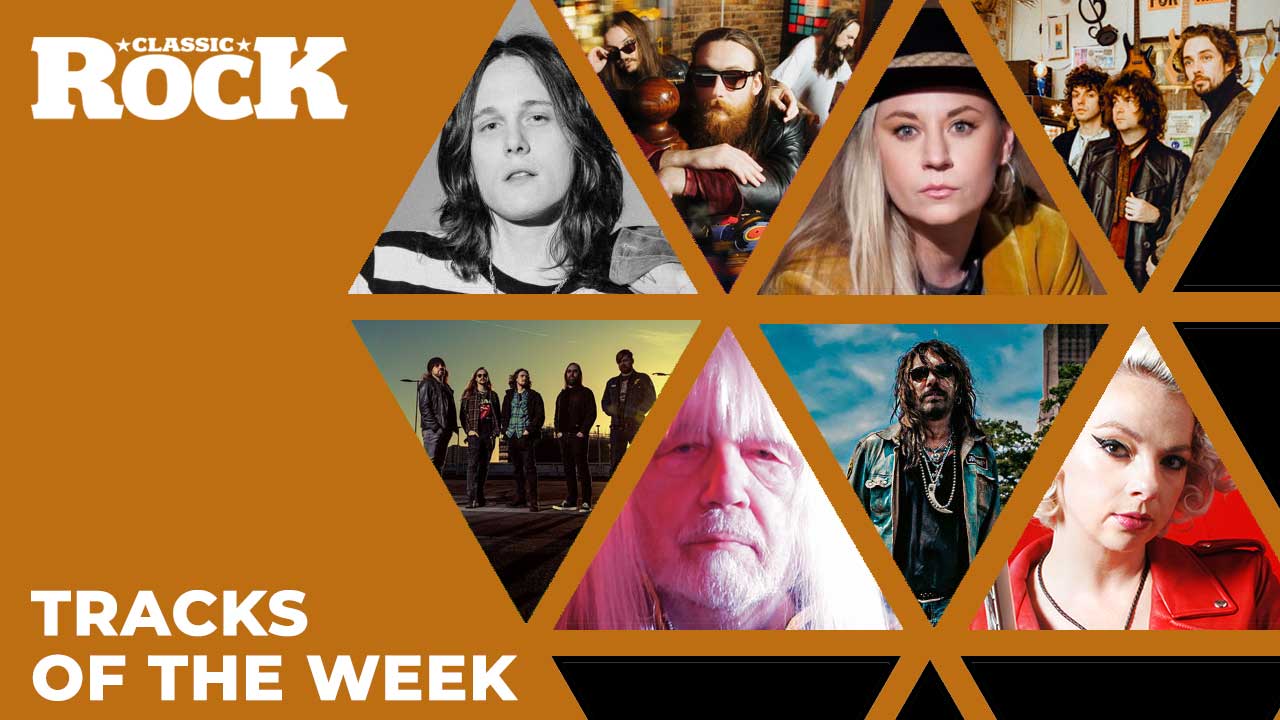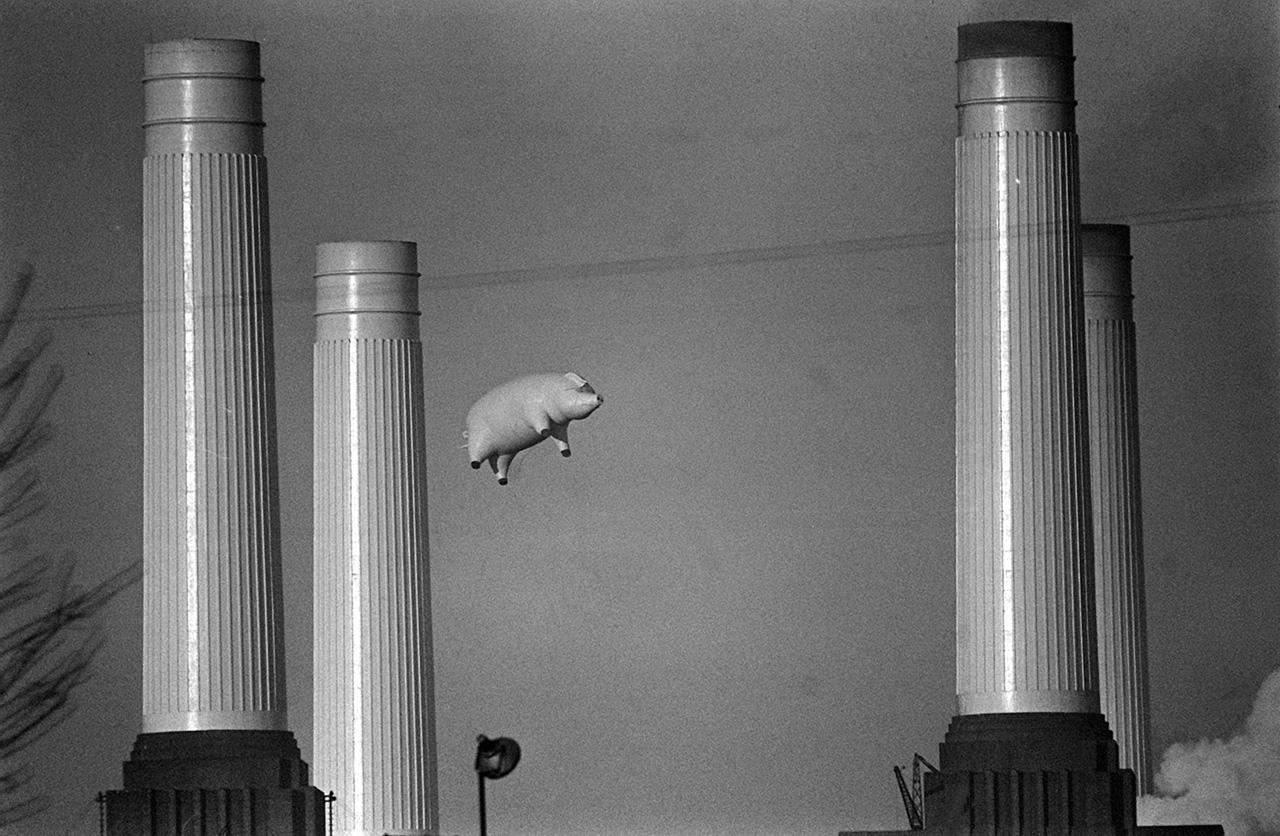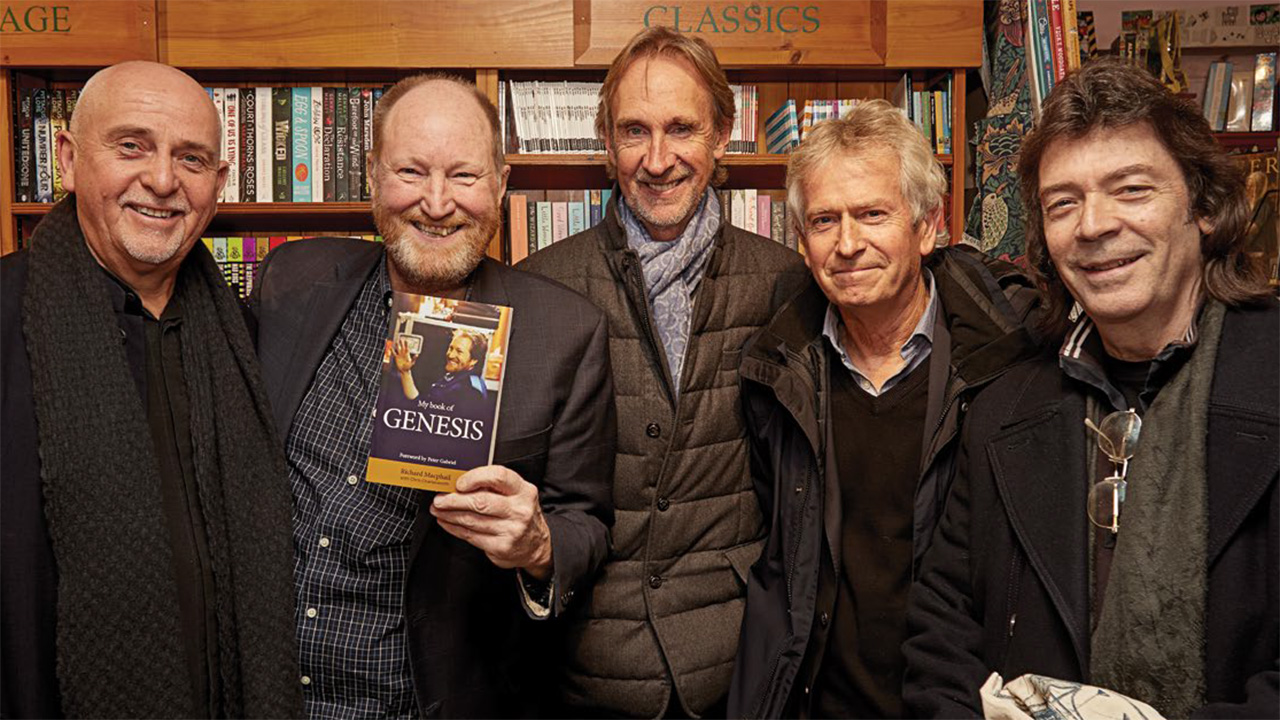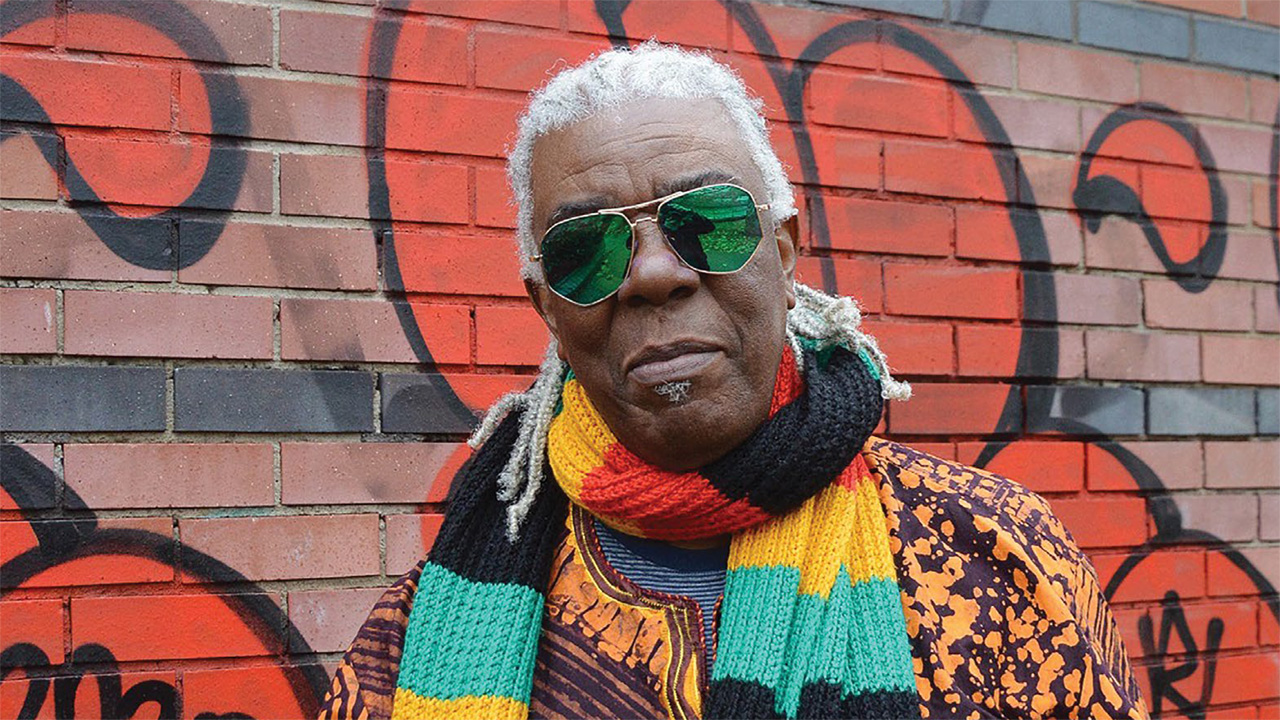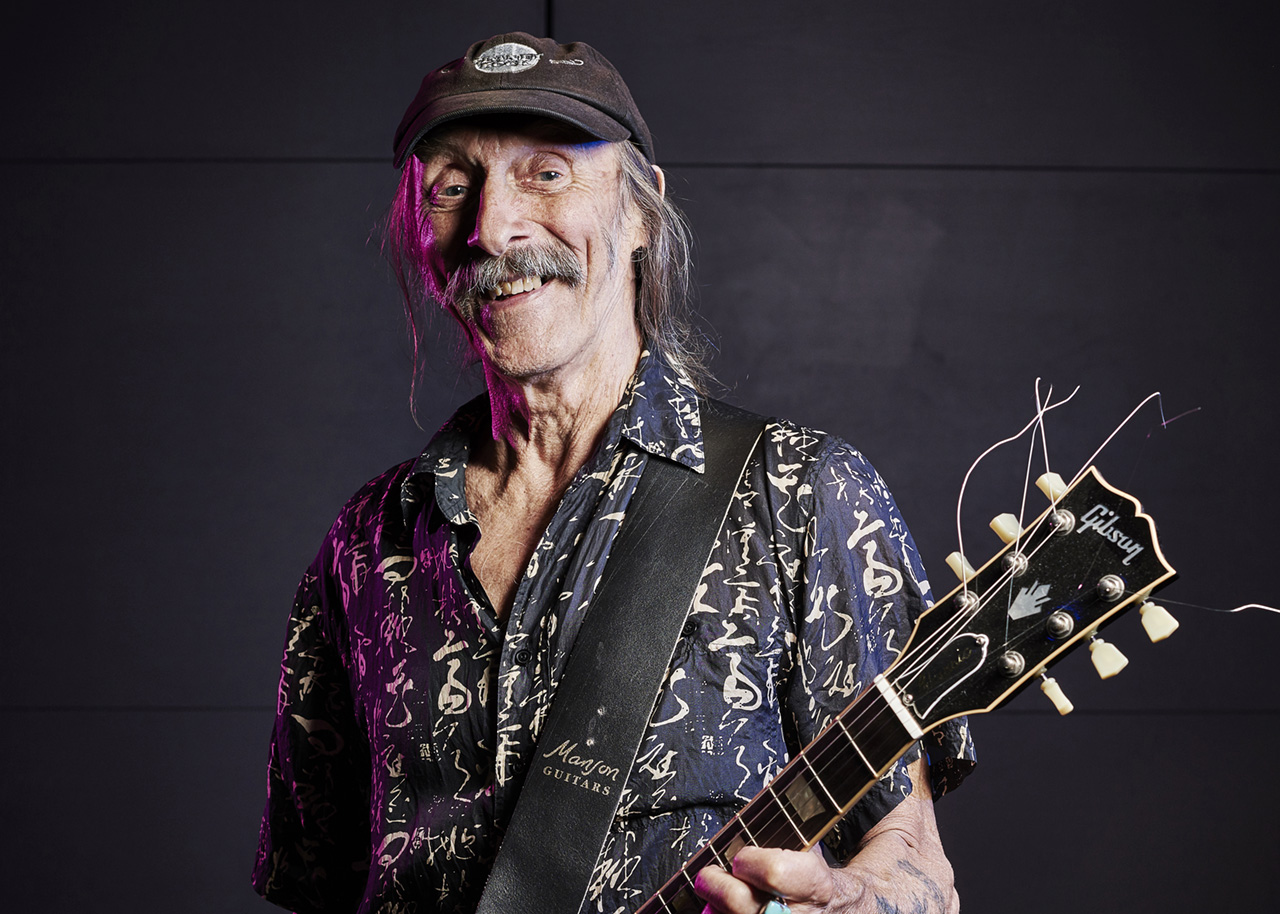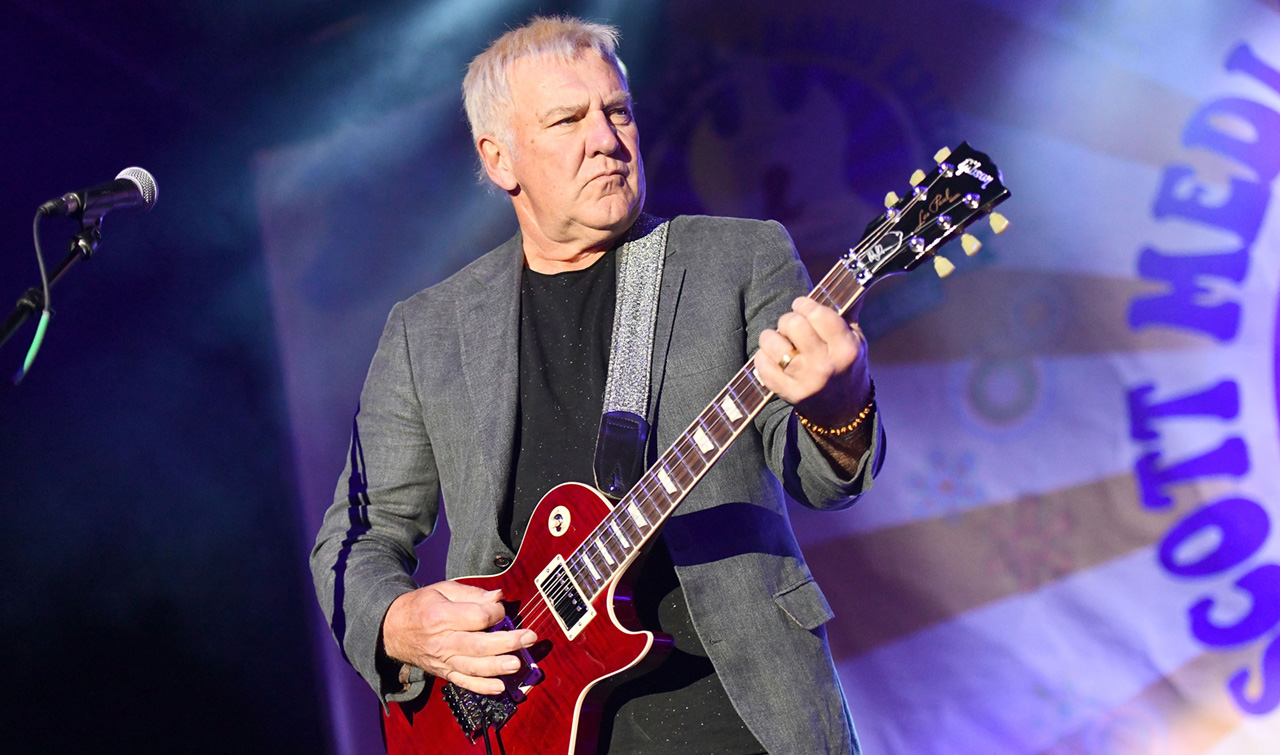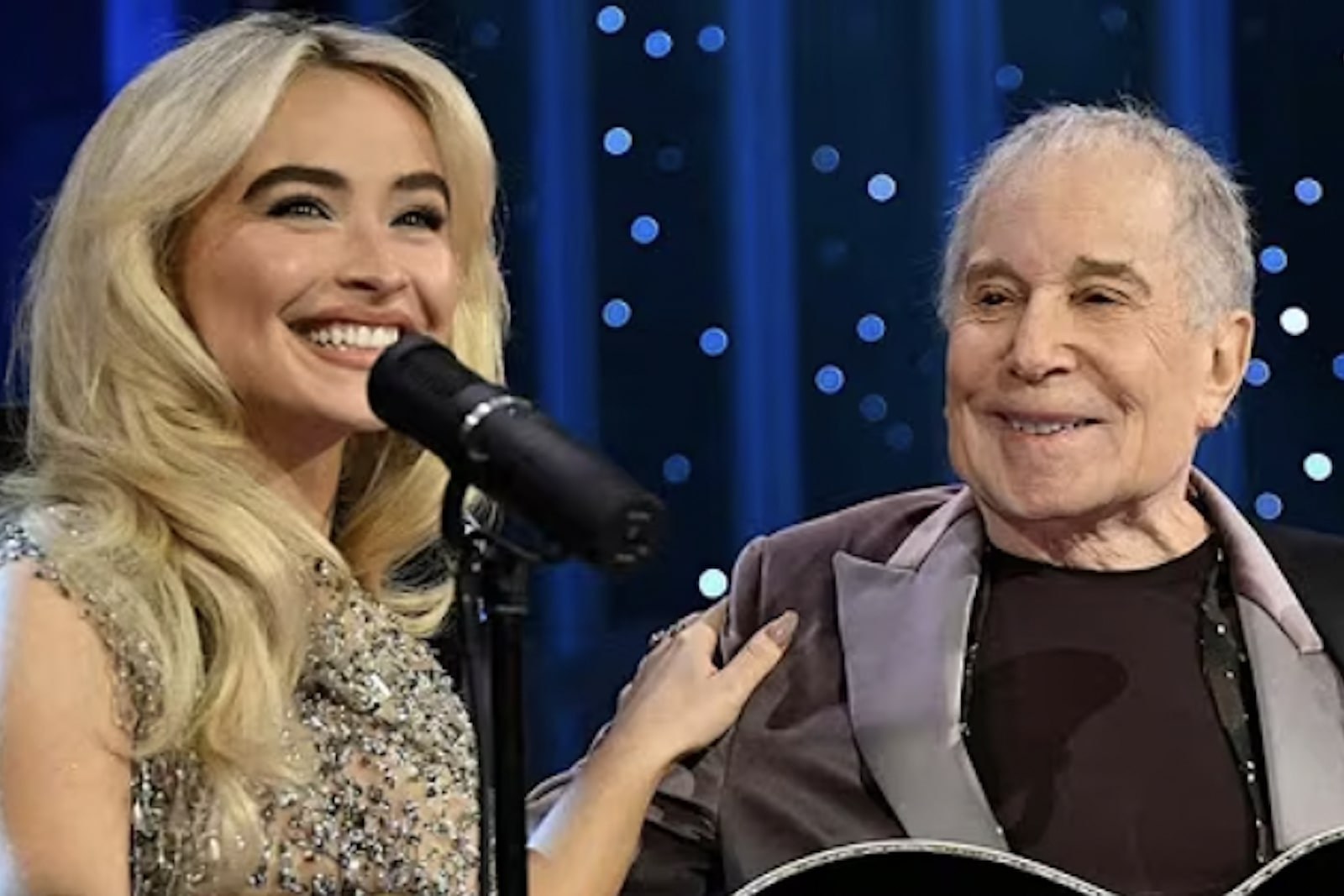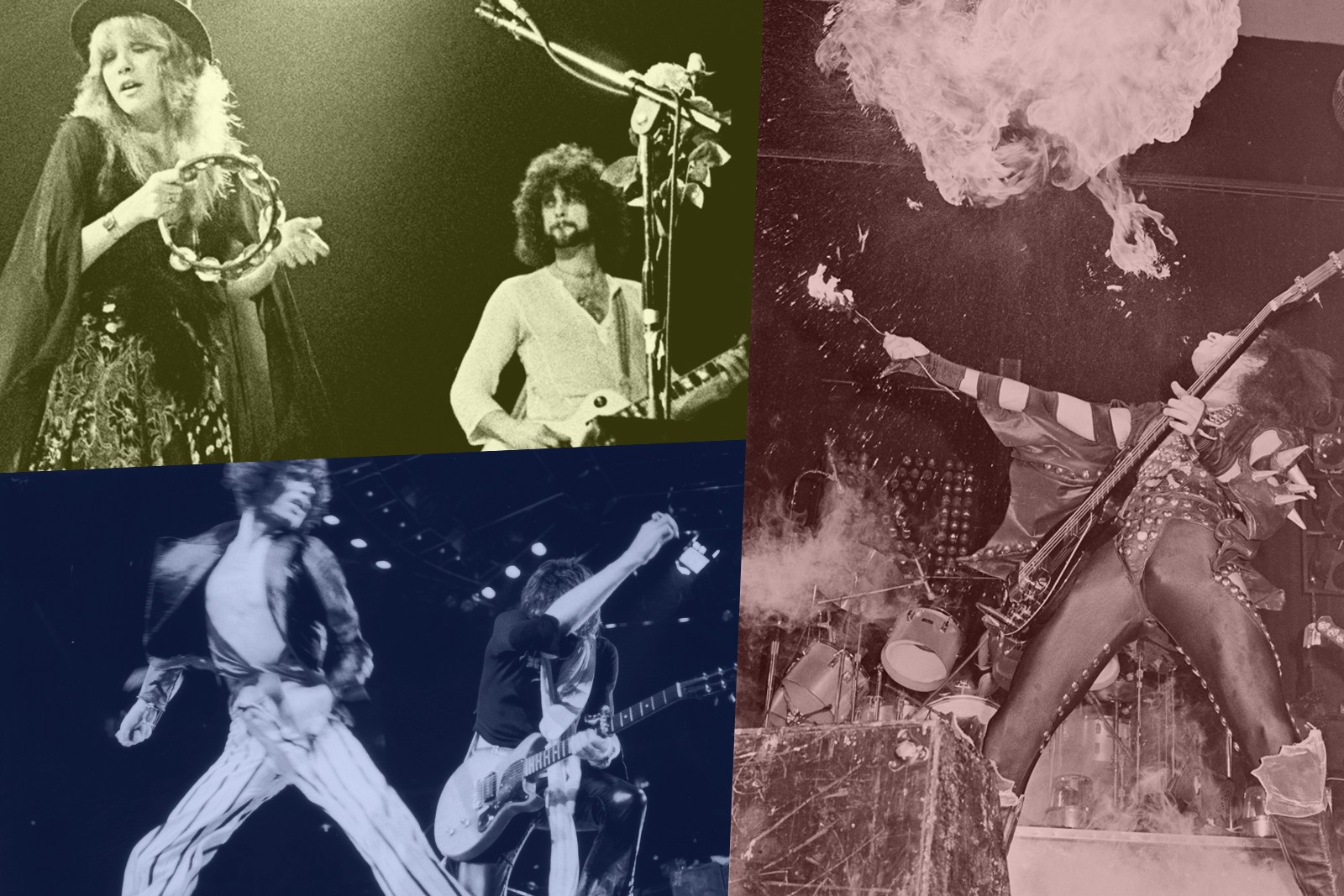
Feature Photo: Mighty Images / Shutterstock.com
Unity has always been a powerful force in rock and roll, woven into anthems of resistance, celebration, and hope. Whether through calls for peace, defiance against division, or simple invitations to come together, musicians have used their craft to break barriers and bring people closer. The ten songs in this article capture different facets of unity—some with bold declarations, others with quiet optimism—but all with the belief that music can transcend borders, beliefs, and backgrounds.
The Doobie Brothers infused Listen to the Music with an infectious groove, suggesting that shared joy in sound can erase differences. The Who’s Join Together leaned into their signature bombast, turning unity into an unstoppable march forward. War delivered Why Can’t We Be Friends? with humor and an easygoing charm, proving that even the deepest divides can be softened with a smile. Robert Palmer’s Every Kinda People took a soulful approach, making a heartfelt plea for acceptance through diversity. John Lennon’s Imagine challenged the world to picture a society free of the barriers that divide us. Jackson Browne’s For Everyman provided a philosophical reflection on perseverance, countering isolation with the idea that no one moves forward alone. Brotherhood of Man’s United We Stand captured the communal power of standing together through hardship. The Youngbloods’ Get Together tapped into the 1960s counterculture, offering a folk-based rallying cry for unity. Doro’s Raise Your Fist turned solidarity into an act of rebellion, rallying listeners to fight for change. Rush’s Different Strings took a more introspective approach, acknowledging that unity is as much about understanding differences as it is about finding common ground.
Each of these songs approaches unity from a different angle—some through defiance, others through harmony—but all reinforce the idea that people are stronger together. In a world that often feels divided, these tracks remind us that music remains one of the most unifying forces of all.
# 10 – Different Strings – Rush
Read More: Alex Lifeson of Rush: The ClassicRockHistory.com Interview
# 9 -Raise Your Fist – Doro
“Raise Your Fist” was recorded by Doro for her twelfth studio album, Raise Your Fist, which was released on October 19, 2012, in Europe and November 6, 2012, in the United States. The song was recorded at multiple locations, including Eardrum Studios in Hamburg, Studio 102 in Bochum, Mastersound Studios in Steinheim, and Intermedia Post in New Jersey. The album was produced by Doro Pesch, Andreas Bruhn, and Torsten Sickert. Musicians featured on the album included Doro Pesch on vocals, Bas Maas and Luca Princiotta on guitars, Nick Douglas on bass, and Johnny Dee on drums.
Doro has long been associated with anthemic heavy metal, and “Raise Your Fist” embodies that spirit with a rallying cry for solidarity and defiance. From the pounding rhythm to the soaring chorus, the track taps into the collective energy of fans who see music as both an escape and a source of empowerment. The song’s title and lyrics encourage unity through resistance, urging listeners to stand together against oppression. The commanding refrain, Raise your fist in the air / Raise your hands up higher, is a call to action that transcends music, resonating as a chant of empowerment.
Lyrically, the song embraces themes of fighting for justice and refusing to back down. Lines such as I will fight until I die / Fight this fight to stay alive reinforce the song’s message of resilience. The imagery of raising a fist has historically symbolized protest and unity, making the song particularly relevant in movements that seek to inspire change. By framing this concept within the high-energy realm of heavy metal, Doro channels the power of collective strength into a dynamic musical statement.
Read More: Top 10 Doro Songs
# 8 -United We Stand – Brotherhood of Man
“United We Stand” was recorded by Brotherhood of Man for their debut album, United We Stand, and was released as a single on January 23, 1970. The song was written by Tony Hiller and Peter Simons (a pseudonym for Johnny Goodison) and produced by Hiller. The group’s lineup at the time included Tony Burrows, Johnny Goodison, Roger Greenaway, Sue Glover, and Sunny Leslie. Burrows, known for his involvement in multiple studio projects, provided lead vocals on several hit songs of the era, further cementing his role as a prominent session singer.
The song became Brotherhood of Man’s first major success, reaching No. 13 on the U.S. Billboard Hot 100, No. 10 on the UK Singles Chart, and No. 9 in Canada. It also charted in Australia, Ireland, and several European countries. Despite the group later finding greater fame with their Eurovision-winning lineup, “United We Stand” remained one of their most enduring songs. Billboard predicted the song’s chart success, describing it as a “strong production” with broad appeal.
“United We Stand” is a straightforward and uplifting anthem about solidarity and resilience. The repeated refrain, For united we stand, divided we fall, serves as the song’s core message, reinforcing the belief that strength comes from togetherness. The lyrics emphasize unconditional support, assuring listeners that even in times of hardship, unity will provide a foundation of strength. This theme of collective perseverance made the song particularly resonant during the politically and socially turbulent era of the early 1970s.
Read More: A Deep Look At Those Tony Burrows Songs That Became 1 Hit Wonders
# 7 – Listen To The Music – The Doobie Brothers
Optimism coursed through the veins of Toulouse Street, and “Listen to the Music” embodied that spirit with a message of unity through sound. Recorded at Warner Bros. Studios in North Hollywood, California, and produced by Ted Templeman, the song was released as the lead single from the album on July 19, 1972. Tom Johnston, who wrote the track, delivered the lead vocals and played guitar, with Patrick Simmons providing additional guitar and backing vocals. Tiran Porter handled bass duties, while John Hartman and Michael Hossack supplied the signature dual-drum attack. The song marked The Doobie Brothers’ first major chart success, peaking at No. 11 on the Billboard Hot 100 and No. 3 on Canada’s RPM chart.
Few songs on this list exude joy as effortlessly as “Listen to the Music.” Unlike the rallying cries of “Raise Your Fist,” which encourages unity through defiance, The Doobie Brothers’ approach is rooted in the sheer power of music to dissolve boundaries. The track invites listeners to surrender to the rhythm, embracing connection not through protest but through shared experience. The lyrics suggest that happiness and understanding are within reach, as seen in lines like And if I’m feeling good to you / And you’re feeling good to me / There ain’t nothing we can’t do or say. This perspective aligns with “Get Together,” which also promotes harmony through personal choice, though the Doobies package their message in a more carefree, groove-driven arrangement.
Instrumentally, the song balances Southern rock, folk, and blues influences, creating a feel-good backdrop that reinforces its theme. The interplay between acoustic and electric guitars, particularly the bright chord progressions and signature flanging effect, makes the song instantly recognizable. While “United We Stand” relies on a grandiose vocal arrangement to drive its message of solidarity, “Listen to the Music” achieves a similar goal with its immersive, layered harmonies. Johnston’s warm, slightly raspy vocal delivery provides an inviting quality, making the track both anthemic and intimate.
Beyond its initial chart success, “Listen to the Music” endured as a staple of classic rock radio and live performances. The Doobie Brothers frequently used it as a show closer, reinforcing its status as a unifying crowd-pleaser. Decades later, in 2020, the band released an acoustic version to benefit Feeding America, demonstrating how the song’s message of collective joy remained just as relevant. Like “Get Together,” it continues to be a reminder that unity is often a matter of choice—sometimes, all it takes is listening.
Read More: 10 Most Rocking Doobie Brothers Songs
# 6 – Join Together – The Who
The Who captured the essence of unity with “Join Together,” a song that was released as a non-album single on June 16, 1972. Written by Pete Townshend, the track was recorded on May 22, 1972, at Olympic Studios in London. It was produced by The Who with associate producer Glyn Johns. The lineup featured Roger Daltrey on lead vocals and harmonica, Townshend on guitar and synthesizer, John Entwistle on bass, and Keith Moon on drums. The song became a commercial success, reaching No. 9 on the UK Singles Chart and No. 17 on the Billboard Hot 100 in the United States.
Unlike the anthemic singalongs of “United We Stand” or the peaceful optimism of “Get Together,” “Join Together” takes a more rhythmic and hypnotic approach to unity. Townshend’s use of a synthesizer loop—an element that Daltrey was initially skeptical about—gives the song an almost trance-like drive, setting it apart from other Who singles. The lyrics repeatedly urge listeners to come together, with lines like Everybody join together / Won’t you join together with the band? reinforcing the track’s communal spirit.
Lyrically, the song avoids heavy-handed political messaging and instead focuses on music as a force for unity. The verse We don’t move in any ‘ticular direction / And we don’t make no collections suggests an inclusive gathering without barriers or conditions. This free-spirited approach echoes “Listen to the Music,” where the act of experiencing music becomes a unifying force. The Who’s delivery, however, is more forceful, demanding action rather than merely encouraging it.
The instrumentation is as much a part of the song’s message as the lyrics. Townshend’s jangling guitar chords, combined with Moon’s propulsive drumming, create a rolling momentum that never falters. The harmonica and handclaps add a raw, celebratory energy, making it an ideal track for live performances. This stands in contrast to “Raise Your Fist,” which channels unity through defiance, while “Join Together” encourages gathering through shared purpose.
Despite being a standalone single, the song has remained a staple in The Who’s catalog, appearing on numerous compilations and frequently performed in concert. The band featured it prominently during their The Who Hits 50! tour and played it at charity events, including The Concert for Killing Cancer in 2011. Its continued presence in their setlists highlights its lasting resonance as a song that calls people together, whether in times of celebration or hardship.
By emphasizing collective action without restrictions, “Join Together” presents unity as an open invitation rather than a struggle. It speaks to the same ideals as other tracks on this list, but its rhythmic insistence and musical innovation make it a unique entry among songs that call for togetherness.
Read More: Complete List Of The Who Songs From A to Z
# 5 – Every Kinda People – Robert Palmer
Robert Palmer introduced “Every Kinda People” as the lead single from his fourth studio album, Double Fun, released in March 1978. Written by Andy Fraser, the song blended elements of reggae rock, calypso, and pop, marking a stylistic shift for Palmer. The track was recorded with producer Tom Moulton, and the personnel included Palmer on vocals and guitar, Paul Barrere and Freddie Harris on guitar, Bob Babbitt on bass, and Allan Schwartzberg on drums. The single reached No. 16 on the Billboard Hot 100, No. 12 in Canada, and No. 53 in the UK, becoming Palmer’s first major U.S. hit.
Unlike the forceful rallying cries of “Raise Your Fist” or “Join Together,” “Every Kinda People” conveys its message of unity with a smooth, melodic groove. The lyrics emphasize inclusivity, stating that it takes every kind of people to make what life’s about, reinforcing the idea that society thrives on diversity. The song acknowledges struggle but ultimately promotes love as the only path to peace, aligning with “Get Together” in its plea for understanding, though Palmer’s delivery is far more polished and soulful.
Musically, the track stands apart with its warm Caribbean-influenced rhythms, setting it apart from the rock-driven arrangements of other songs on this list. The steel drums, played by Robert Greenidge, add a distinct texture, while Palmer’s effortless vocals create an inviting atmosphere. This production choice mirrors the song’s theme, presenting unity as something natural and harmonious rather than something to be fought for. In contrast, “United We Stand” embraces a more declarative, chant-like approach to solidarity.
“Every Kinda People” has remained one of Palmer’s most enduring songs, receiving a successful 1992 remix that charted at No. 8 on Billboard’s Adult Contemporary chart. Over the years, it has been covered by numerous artists, including Amy Grant and Randy Crawford, further cementing its status as a timeless anthem of acceptance. The song’s lasting appeal lies in its universal message—true unity comes from embracing differences, not erasing them.
If you watch the video closely, you will se a young long-haired Ralph Fiennes as one of those Every Kinda People for a split second. It is the 22-second mark.
Read More: Top 10 Robert Palmer Songs
# 4 – Why Can’t We Be Friends – War
War approached the theme of unity with humor and groove on “Why Can’t We Be Friends?,” a song that blurred the lines between social commentary and lighthearted camaraderie. Released in May 1975 as the title track of their album Why Can’t We Be Friends?, the song was recorded at Sound City Studios in Van Nuys, California. It was produced by Jerry Goldstein, Howard Scott, and Lonnie Jordan. The lineup included Scott on guitar and vocals, Jordan on keyboards and vocals, B.B. Dickerson on bass, Harold Brown on drums, Charles Miller on saxophone, Papa Dee Allen on percussion, and Lee Oskar on harmonica. The single climbed to No. 6 on the Billboard Hot 100 and No. 9 on the Canadian RPM chart, further solidifying War’s reputation for blending funk, Latin, jazz, and R&B influences into socially conscious music.
Lyrically, “Why Can’t We Be Friends?” presents unity in a conversational and playful way, addressing racial and economic divides with wit rather than defiance. The line The color of your skin don’t matter to me / As long as we can live in harmony delivers the song’s core message with an unpretentious sincerity. In contrast, “Raise Your Fist” calls for unity through rebellion, while “Get Together” leans on folk idealism. War’s approach, however, is laid-back and inviting, making their message accessible to a wide audience. The repeated chorus, Why can’t we be friends?, acts as both a genuine plea and a humorous nudge, reinforcing the idea that barriers between people are often unnecessary and easily broken down.
Musically, the track’s steady groove and alternating vocalists create an effortless, jam-like atmosphere. The instrumentation avoids bombast, relying on a rolling bassline, handclaps, and a singalong chorus to carry the song’s infectious energy. Unlike “Join Together,” which builds intensity through a marching rhythm, or “United We Stand,” which uses a soaring choral arrangement, War’s composition is stripped down, allowing the rhythm section and saxophone to take center stage. This simplicity enhances its universal appeal, making it a track that feels equally at home at protests, parties, and sporting events.
“Why Can’t We Be Friends?” has remained a cultural touchstone, appearing in films, television shows, and political campaigns. NASA even played it for the Apollo-Soyuz Test Project in 1975, symbolizing U.S.-Soviet cooperation. Decades later, the song’s message of acceptance continues to resonate, much like “Every Kinda People,” which also emphasizes diversity as a strength. However, War’s playful, almost mischievous delivery ensures that their call for unity never feels preachy—it simply invites everyone to join in.
Read More: Top 10 Songs From The Band War
# 3 – For Everyman – Jackson Browne
Jackson Browne captured the tension between escapism and perseverance in “For Everyman,” the title track of his second studio album, For Everyman, released in 1973. The song was recorded at Elektra Sound Recorders in Los Angeles and produced by Browne himself. The lineup featured Browne on vocals and acoustic guitar, David Lindley on electric and acoustic guitars, Leland Sklar on bass, Russ Kunkel on drums, Craig Doerge on piano, and David Crosby contributing harmony vocals. Though not released as a single, the track became a defining statement of Browne’s early songwriting.
Lyrically, “For Everyman” contrasts individualistic escape with the hope of collective perseverance. Inspired by conversations with David Crosby about abandoning society, the song directly responds to “Wooden Ships,” a track written by Crosby, Stephen Stills, and Paul Kantner that envisions an apocalyptic exodus. While Crosby, Stills & Nash imagined leaving behind a collapsing world, Browne instead offered a more grounded outlook, singing Deliverance must come for everyone rather than just an elite few. This philosophical approach aligns with “Get Together” in its call for a broader sense of unity, though Browne’s take is more introspective and cautious.
Musically, the song builds from a subdued acoustic opening into a full-band arrangement, mirroring its lyrical journey from uncertainty to resolve. The subtle interplay between Lindley’s guitars and Doerge’s piano creates an expansive, contemplative soundscape. Unlike the celebratory nature of “Listen to the Music” or the rhythmic insistence of “Join Together,” Browne’s composition unfolds with patience, giving weight to each word and note. This sense of quiet determination reinforces the song’s message that unity is not about escape but about endurance and shared responsibility.
“For Everyman” has remained a staple of Browne’s catalog, frequently performed in his live shows and included on compilations such as The Very Best of Jackson Browne. Over the decades, its themes have only gained resonance, serving as a reminder that true solidarity comes not from running away but from standing firm together.
Read More: 10 Most Rocking Jackson Browne Songs
# 2 – Get Together – The Youngbloods
“Get Together” was recorded by The Youngbloods for their self-titled debut album, The Youngbloods, which was released in 1967. The song was written by Chet Powers (also known as Dino Valenti) and was originally titled “Let’s Get Together.” Felix Pappalardi produced the track, which was recorded under RCA Victor. Jesse Colin Young provided lead vocals and bass, Jerry Corbitt played lead guitar, Lowell “Banana” Levinger handled rhythm guitar and keyboards, and Joe Bauer was on drums. The song initially charted modestly, peaking at No. 62 on the Billboard Hot 100 in 1967. However, after being used in a National Conference of Christians and Jews radio campaign, it was reissued in 1969 and climbed to No. 5 on the Billboard Hot 100, becoming The Youngbloods’ signature hit.
The song’s gentle folk-rock arrangement and earnest delivery enhance its powerful message of unity and compassion. The acoustic-driven melody, coupled with Young’s warm vocals, creates an atmosphere of sincerity that distinguishes it from other anthems of the era. Unlike more confrontational protest songs of the 1960s, “Get Together” delivers its call for peace with a sense of hopeful urgency rather than defiance. The instrumentation remains restrained yet effective, with Levinger’s organ flourishes adding a sense of spiritual uplift to the track’s openhearted message.
Lyrically, “Get Together” embodies the essence of unity, urging listeners to choose love over fear. The opening lines, Love is but a song we sing / Fear’s the way we die, immediately set the song’s philosophical tone. The refrain, Come on, people now / Smile on your brother / Everybody get together / Try to love one another right now, reinforces a communal spirit, making it a defining anthem of the peace movement. The song’s bridge delivers a profound reflection on human choice: You hold the key to love and fear / All in your trembling hand / Just one key unlocks them both / It’s there at your command. This lyrical duality underscores the song’s deeper message—unity is not just an ideal but a conscious decision.
Read More: Top 10 Songs By The Youngbloods
# 1 – Imagine – John Lennon
John Lennon recorded “Imagine” between May 27 and July 4, 1971, at Ascot Sound Studios in England and the Record Plant in New York City. Released on October 11, 1971, as the title track of his second solo album, the song was produced by Lennon, Yoko Ono, and Phil Spector. The instrumentation featured Lennon on piano and vocals, Klaus Voormann on bass, Alan White on drums, and the Flux Fiddlers providing string arrangements. The single became Lennon’s best-selling solo hit, reaching No. 3 on the Billboard Hot 100 and No. 6 on the UK Singles Chart.
The song’s lyrics present a utopian vision of unity, rejecting barriers that divide people, including national borders, materialism, and religion. Lines such as Imagine all the people / Living life in peace offer a direct plea for harmony, making “Imagine” thematically aligned with “Get Together” and “Every Kinda People.” However, where those songs emphasize communal action, Lennon’s approach is more philosophical, challenging listeners to rethink the systems that separate them. The chorus, You may say I’m a dreamer / But I’m not the only one, acknowledges skepticism while reinforcing the song’s message of shared hope.
Musically, “Imagine” contrasts with the more rhythmic and anthemic unity songs on this list. The sparse arrangement, built around Lennon’s piano progression and delicate string backing, creates a meditative atmosphere. Unlike the groove-driven optimism of “Why Can’t We Be Friends?” or the rallying energy of “Join Together,” Lennon’s composition remains gentle and introspective, using minimalism to enhance its emotional weight.
The song’s legacy has only grown over the decades, becoming an international anthem for peace movements. Covered by countless artists and performed at major events, including the Olympic Games, “Imagine” remains a defining statement on unity. While some critics have debated its idealism, its enduring appeal underscores the power of music to inspire collective vision.
Read More: Complete List Of John Lennon Songs From A to Z
Check out similar articles on ClassicRockHistory.com Just click on any of the links below……
Read More: Artists’ Interviews Directory At ClassicRockHistory.com
Read More: Classic Rock Bands List And Directory







